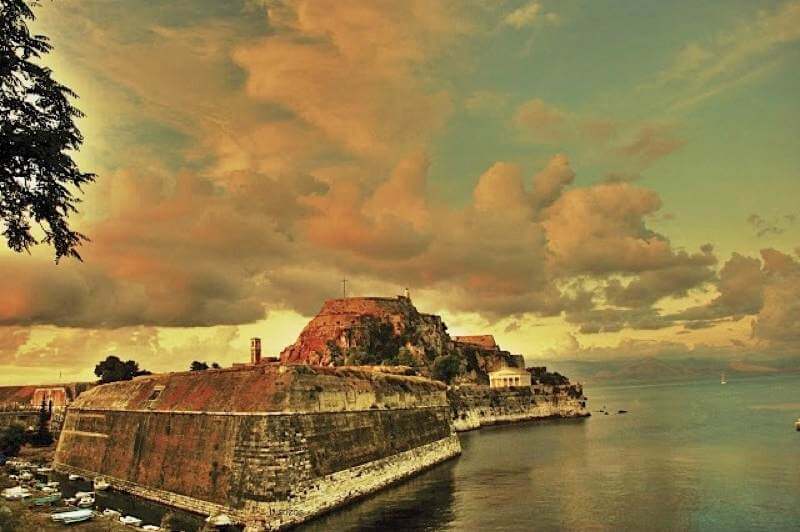Historical facts, geography, and demographics for passengers on a cruise to Corfu (Kerkyra) port
Corfu is also known as Kerkyra in Greek and was named after Nymph Korkira from mythology. As the story goes, Poseidon, the God of the Sea, was so in love with Korkira that he abducted her and brought her to the island.
.jpg)
Historical Print Corfu in 1488
Photo: public domain
Brief History
The first Greek settlers on Corfu were the Eritreans who came in the 8th century BC. From 300 BC, Corfu was repeatedly attacked and taken over by Spartans, Illyrians and Romans, who remained on the island from 229 BC to 337 AD.
Christianity came to Corfu in about 40 AD, by way of Jason and Sossipatros, two disciples of Saint Paul. They built the first Christian church and dedicated it to Saint Stephan.
After the end of the Roman Empire, Corfu became part of the Byzantine Empire. During this period, the island suffered pirate raids and attacks from barbarians, Goths, or Saracens. Towers, such as the Kassiopi Tower, were built as protection.
In 1267, Charles of Anjou, French King of Sicily, captured the island and attempted to replace the current religion with Catholicism by persecuting the Christian Orthodox and converting all churches to Catholic. This didn't last long as the island returned to Venetian rule from 1386 to 1797, while the rest of Greece was under Ottoman rule.
In 1797, Corfu became part of the French State, but in 1799, an allied fleet of Turks, Russians and English conquered the island. The "Ionian State" was established by Constantinople but, in 1807, Corfu returned to French domination.
A period of English rule followed, and Corfu began to prosper. The Greek Language became official and the first university was founded. In May 1864, the Ionian Islands were given to the King of Greece from the British.

Historical Painting of the Old Fort
Photo: public domain
During the Second World War, the island served as a refuge for the Serbian Army. In WWII, most of the island's important buildings were seriously damaged, if not destroyed, but most were fortunately restored in the mid-1900s.
Geography and Demographics
Corfu is the second largest Greek island in the Ionian Sea. It is located on the west coast of Greece's mainland. The north part is just off the coast of Sarandë, Albania - separated by straits between 3 and 23 km (2 to 14 miles) wide. The southeast side is off the coast of Thesprotia in Greece.
Corfu's Economy
Agriculture: The island is covered by olive groves and vineyards that have been producing olive oil and wine since antiquity. In more recent times kumquat and bergamot oranges have been introduced, which are used in sweets and liqueurs.
Tourism: Corfu has become a very important port of call for cruise ships with over 600,000 visitors per year.
The Island of Corfu
In 2006 the Province of Corfu was abolished and, in 2011, the former 15 municipalities where merged into one local government with the capital in Corfu City.
Island Population: 102,071 inhabitants
Island Area: 170 sq-km (430 sq miles)
Patron Saint: Saint Spyridon (also spelled Saint Spiridon)
Saint Day: December 12
The City of Corfu
Corfu City Area: 41.905 sq-km (16.180 sq miles)
Population: approximately 39,487 residents (2011)
Population Density: 940 / sq-km (2,400 / sq miles)





